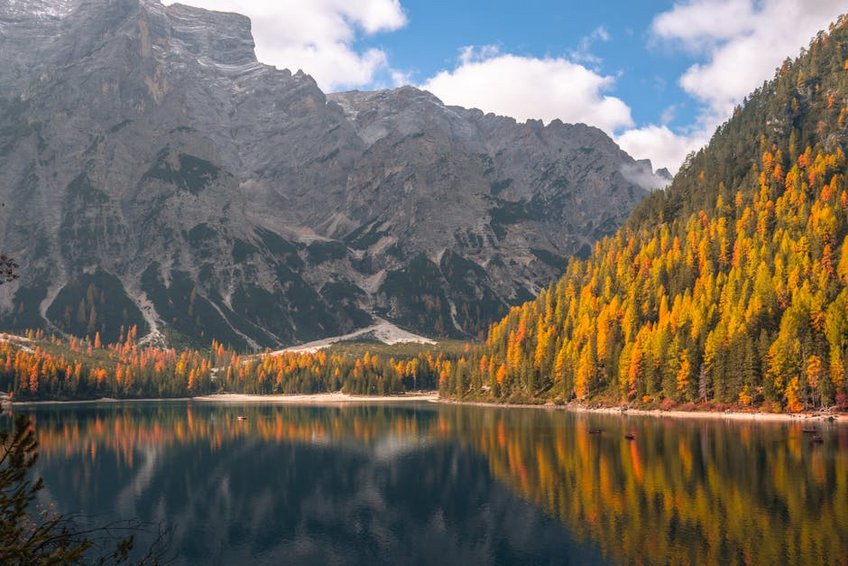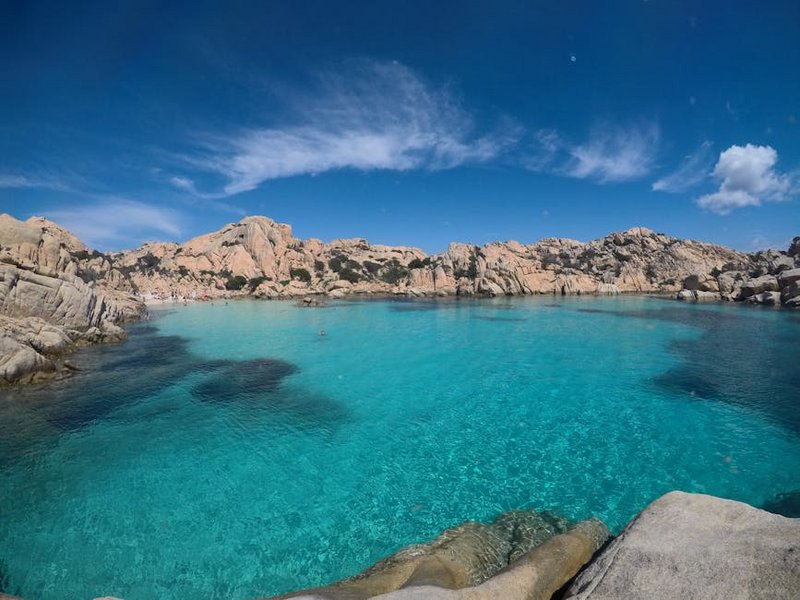Malawi Lake Malawi Snorkeling: Discover Africa’s Freshwater Paradise
Imagine floating in crystal-clear waters surrounded by more colorful fish species than you’d find in any aquarium—this is exactly what awaits you with Malawi Lake Malawi snorkeling adventures. As the world’s ninth largest lake and Africa’s third largest, Lake Malawi boasts an incredible biodiversity that earned it UNESCO World Heritage status, with over 1,000 species of cichlid fish found nowhere else on Earth. You’ll be mesmerized by the vibrant blues, yellows, and oranges of these unique fish as they dart through underwater rock formations and sandy bottoms. The water maintains a comfortable 24-29°C (75-84°F) year-round, creating perfect conditions for extended snorkeling sessions without needing a wetsuit. Many visitors describe the experience as snorkeling in an enormous natural aquarium where the fish show no fear of humans, often swimming right up to your mask. Malawi Lake Malawi snorkeling offers this incredible accessibility—from luxury resorts with private beaches to public access points where you can simply walk into the water with your gear. The lake’s exceptional visibility of 10-20 meters (33-66 feet) ensures you won’t miss any of the underwater spectacle, making it ideal for both beginners and experienced snorkelers seeking an unforgettable freshwater adventure.
Malawi Lake Malawi Snorkeling – Essential Information
Before you pack your snorkel gear, understanding Lake Malawi’s unique characteristics will enhance your experience significantly. This massive freshwater lake stretches 580 kilometers (360 miles) long and 75 kilometers (47 miles) wide, forming part of Malawi’s border with Tanzania and Mozambique. The lake’s age—estimated at 1-2 million years—has allowed for extraordinary evolutionary processes, resulting in the incredible cichlid fish diversity that makes snorkeling here so special. You’ll want to know that most popular snorkeling spots are concentrated along the lake’s western shore in Malawi, particularly around Cape Maclear, Nkhata Bay, and Likoma Island. The water is generally calm with minimal currents, though afternoon winds can create waves in certain areas. What makes Malawi Lake Malawi snorkeling particularly remarkable is that you don’t need boat access to reach excellent sites—many of the best spots are just steps from the shoreline. The lake’s alkaline pH (7.8-8.6) contributes to its clarity and supports the unique ecosystem, while the absence of dangerous marine life like sharks or jellyfish makes it exceptionally safe for snorkeling enthusiasts of all ages.
What Makes Lake Malawi Snorkeling Unique
- The lake contains approximately 30% of all known cichlid species worldwide, with new species still being discovered by researchers and fortunate snorkelers.
- You’ll experience exceptional water clarity with visibility often exceeding 15 meters (50 feet), rivaling many oceanic destinations without the saltwater discomfort.
- Unlike coral reefs, the underwater landscape features fascinating rock formations, sandy bottoms, and aquatic plants that create diverse habitats for different fish behaviors.
- Budget travelers can manage with $30-50 per day covering basic accommodation, local meals, and snorkel gear rental, while mid-range options cost $80-150 daily including comfortable lodging and some guided activities.
- Luxury experiences range from $200-400 per day featuring high-end lakeside resorts, private boat trips to exclusive snorkeling spots, and gourmet dining with lake views.
- Additional costs include park fees of $10-20 for protected areas, boat transfers to islands ($15-40 round trip), and travel insurance which is essential for medical coverage in remote areas.
- Official Malawi Tourism Website
- Lonely Planet Malawi Travel Guide
- UNESCO Lake Malawi National Park Listing
Geographical and Environmental Features
Lake Malawi’s formation within the East African Rift Valley creates dramatic underwater topography that snorkelers can explore. The lake reaches depths of over 700 meters (2,300 feet) in some areas, though most snorkeling occurs in much shallower waters of 1-10 meters (3-33 feet). You’ll notice distinct habitat zones—rocky shores host the most colorful cichlids, while sandy areas feature different species adapted to open waters. The lake’s temperature remains remarkably stable throughout the year, rarely dropping below 22°C (72°F) even during the cooler months. This thermal consistency means you can enjoy Malawi Lake Malawi snorkeling during any season without concern about cold water shock. Environmental protection efforts have preserved the lake’s pristine conditions, though you should still practice responsible snorkeling by not touching the fish or disturbing their habitats.

Malawi Lake Malawi Snorkeling – Planning Your Trip
Proper planning ensures you make the most of your Malawi Lake Malawi snorkeling adventure while avoiding common pitfalls. You’ll need to consider travel seasons, budget appropriately for African travel, and prepare for the specific conditions of freshwater snorkeling in a developing country. The good news is that Malawi remains one of Africa’s more affordable destinations, with snorkeling equipment rentals costing just $5-10 per day at most resorts. If you’re bringing your own gear, ensure your mask fits properly since you’ll be spending hours observing the underwater world. You should allocate at least 5-7 days for a proper Lake Malawi snorkeling trip to experience different sites and accommodate potential travel delays. Most international visitors fly into Lilongwe International Airport (LLW) or Chileka Airport in Blantyre, then take ground transportation to the lake, which can take 3-6 hours depending on your chosen base. Booking accommodations in advance is wise during peak seasons, though you’ll find options ranging from basic backpacker hostels to luxury eco-lodges catering to different budgets and preferences.
Best Time to Visit for Lake Malawi Snorkeling
Timing your visit correctly dramatically improves your Malawi Lake Malawi snorkeling experience. The dry season from May to October offers the optimal conditions with minimal rainfall, cooler temperatures, and excellent water visibility often exceeding 20 meters (66 feet). During these months, you’ll enjoy sunny days with temperatures around 25-28°C (77-82°F) and comfortable nights. The shoulder months of April and November still provide good snorkeling conditions with fewer tourists and lower prices. Avoid the rainy season from December to March when heavy rainfall can reduce visibility and make some roads to lake access points difficult to navigate. However, if you visit during the wet season, you’ll experience lush green landscapes and have the lake largely to yourself. Water temperatures remain warm year-round, so the primary considerations are visibility and weather conditions for other activities beyond snorkeling.
Budget Planning and Costs
Essential Preparation Checklist
Preparing thoroughly ensures your Malawi Lake Malawi snorkeling trip goes smoothly from start to finish. First, check visa requirements—most Western passport holders can obtain visas on arrival for $50-75 valid for 30 days. You’ll need current yellow fever vaccination documentation if arriving from affected countries. Pack reef-safe sunscreen to protect both your skin and the lake’s ecosystem, along with after-sun lotion since the African sun can be intense even underwater. Bring your prescription medications since specific brands might not be available locally. While snorkeling gear is widely available for rent, serious enthusiasts might prefer bringing their own high-quality mask, snorkel, and fins for optimal comfort. Download offline maps and translation apps since internet connectivity can be limited around the lake. Finally, inform your bank about international travel to ensure your cards work for withdrawals and payments throughout your journey.
Malawi Lake Malawi Snorkeling – Top Attractions and Activities
Beyond the incredible underwater spectacle, the Lake Malawi region offers diverse attractions that complement your snorkeling adventures perfectly. You’ll discover that each snorkeling location has its unique character—from the fish-filled rocks of Cape Maclear to the deep clear waters around Likoma Island. Many visitors combine snorkeling with kayaking, sailing, or hiking in nearby national parks to create a well-rounded African experience. The lake’s islands provide particularly rewarding snorkeling opportunities, with Likoma Island offering exceptionally clear waters and less crowded conditions. Don’t miss the chance to visit Lake Malawi National Park at Cape Maclear, where protected waters ensure abundant fish populations and pristine conditions. Evening activities often include cultural performances, beach bonfires, or simply relaxing with a sundowner while watching the spectacular African sunset over the water. Many resorts offer night snorkeling with waterproof torches, revealing a completely different underwater world with nocturnal species emerging after dark.
Must-See Underwater Highlights
Your Malawi Lake Malawi snorkeling experience should include several iconic locations where the aquatic life is most spectacular. At Cape Maclear’s Otter Point, you’ll encounter massive schools of colorful utaka and mbuna cichlids swimming through dramatic rock formations in water so clear it feels like flying. The rocks around Domwe Island host particularly tame fish that will eat directly from your hand if permitted by guides. At Nkhata Bay, the underwater topography features steep drop-offs where you can observe different fish species at various depths without venturing too far from shore. Chizumulu Island offers some of the lake’s best visibility and unique rock formations covered in colorful algae that attract specific cichlid species. Remember to look for the famous “living fossil” fish—the brightly colored livingstonii cichlids that resemble species from prehistoric times. Each location provides distinct photographic opportunities, so bring an underwater camera or smartphone case to capture these unforgettable moments.
Hidden Gems and Local Favorites
While popular spots deliver incredible experiences, venturing slightly off the beaten path reveals Lake Malawi’s best-kept secrets for snorkeling enthusiasts. The less-visited Mlowe area on the northern lakeshore offers pristine conditions with minimal tourist development and spectacular fish diversity. Near Senga Bay, local fishermen can guide you to underwater sites where you might spot the rare and beautiful electric blue cichlids found only in specific microhabitats. Many visitors miss the excellent snorkeling available right from public beaches in smaller lakeside communities where you can interact with local children who often join snorkelers in the water. The Mumbo Island camp provides exclusive access to protected waters where fish populations remain completely undisturbed by fishing pressure. For a unique experience, some operators offer “snorkel safaris” where you move between multiple sites by boat throughout the day, experiencing different underwater environments and fish communities in a single excursion.
Malawi Lake Malawi Snorkeling – Practical Travel Information
Navigating the practical aspects of your Malawi Lake Malawi snorkeling trip ensures a smooth and enjoyable experience from arrival to departure. You’ll find that transportation options range from comfortable tourist minibuses to local matolas (shared minibuses) that offer authentic cultural experiences. The Malawian kwacha is the local currency, though US dollars and euros are widely accepted at tourist establishments, with current exchange rates around 1,000 MWK to $1 USD. Credit cards work at larger hotels and resorts, but you’ll need cash for smaller purchases, so plan to withdraw local currency upon arrival. English serves as the official language alongside Chichewa, making communication relatively straightforward for Western visitors. Health considerations include taking malaria prophylaxis since the lake region is endemic, though the risk decreases with proper precautions. Mobile network coverage exists around most popular snorkeling areas, with Airtel and TNM being the main providers offering affordable data packages for staying connected during your adventure.
| Category | Options/Features | Price Range (USD) |
|---|---|---|
| Accommodation | Beachfront lodges, eco-camps, backpacker hostels with lake access | $15-300 per night |
| Snorkeling Tours | Guided half-day trips, private boat excursions, equipment rental | $20-100 per person |
| Transportation | Local buses, private taxis, rental cars, boat transfers | $5-150 depending on distance |
| Food & Dining | Local restaurants, resort dining, street food, self-catering | $5-40 per day |


